
Jump to:
| CN 70 | CN 71 | CN 72 | CN 73 | CN 74 | CN 75 | CN 76 | CN 77 |
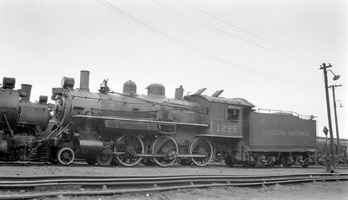
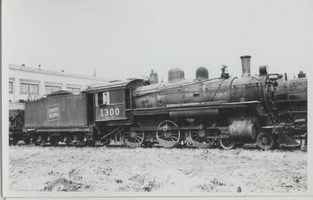
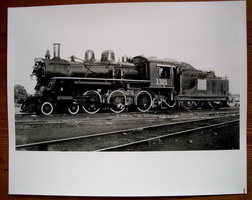
By December 1941 the traffic on the Trans-Australian Railway increased to such a degree that it was becoming imperative to obtain additional locomotive power. Moves had been made during 1940-41 to invite tenders for further locomotives of similar design to the C class, to help offset the traffic increase, but, despite seeking assistance from manufacturers in Australia and overseas, no contracts resulted. Emergency arrangements were now necessary, with Australian Trade Commission representatives in New York being contacted in an effort to find someone to build eight passenger locomotives to a slightly modified Lima NY19 design.
The U.S. Army agreed to assist, through the agency of the Lend-Lease organisation, but were horrified when told that the locomotives had to be capable of running on 80 lb rail with an axle load of 18 tons. They claimed that locomotives that light hadn't been built in the U.S. since 1907. When the additional power did arrive they were 1907 models.
The first to arrive was a group of eight ex Canadian National Railways superheated 4-6-0 type, complete with bells mounted on top of the boiler. They became known as the CN class and had been built by the Montreal Locomotive Works[mr], in 1907 and 1908 for the Canadian Northern Railway CNoR. The CNoR was merged with the Canadian Government Railways (CGR) in 1920 or so after defaulting on Federal Loans. The combined Railways formed the CNR which later absorbed the Grand Trunk (GT) and the Grand Trunk Western) Not to mention a whole host of other smaller Railways that faltered. All were brought in to the federaly owned CNR.[mr] On the Canadian National Railway they were known there as the H-6-c class. An interesting feature of the CNs was the value gear. The eccentrics were fitted to the driving axle in the usual way for Stephenson gear, but instead of the drive gear being direct on to the value spindles in the same plane, the drive was attached to one end of a heavy steel crank. This transferred the line of the drive from inside the frame to a piston valve, mounted outside above the cylinders, similar to Walscheart or Southern valve gear.
Out the 45 units in this class only 20 lasted past 1950, they were all retired by 1958. When only 2 were still in service. Most were retired right after the war. The units sent to Australia were likely on there last legs to begin with since they were only expected to last out the war.[mr]
The remaining two locomotives were built by Baldwin Locomotive Works, and locally known as CA78 and 79. The two classes were alike in appearance and had similar power ratings. The driving position of both was on the right side of the cab.
The general condition of all ten locomotives was not very good and it appears that the American engines were considerably more worn than the Canadian ones. The CN class was particularly prone to priming, and modifications were made to the arch tubes in the firebox of CN72 and CN77 in an attempt to correct the problem. The boiler pressure of the CNs was later reduced from 200 Ibs p.s.i. to 170 Ibs p.s.i. and the tractive effort reduced from 30,000 Ibs to 29,000 Ibs.
These ten engines helped ease the situation on the TransAustralian Railway considerably despite their age and poor condition, but proved to be unpopular with crews. Initially all worked over the entire length of the Trans-Australian Railway, but due to continuing problems in later years they were used mainly on the 56 miles stretch between Port Pirie Junction and Port Augusta. Eventually they were kept off running trains as much as possible, instead being allocated as standby engines along the line and local shunt engine Parkeston.
As traffic slackened towards the end of the war various CN and CA class locomotives were set aside with a few being retained until the introduction of the diesel-electrics. All units were gone by December 1951. It is known that some were out of service for up to four years before being written off.
| Class: | CN | |
| Builder: | Montreal Locomotive Works (MLW) - Formerly Locomotive and Machine Company, Montreal, Canada, but after purchase by Alco in 1904 it was renamed MLW. | |
| Introduced: | 1942 | |
| Number in Class: | 8 | |
| Wheel Arrangement: | 4-6-0 | |
| Driving Wheel Diameter: | 5 ft. 3 in. | |
| Cylinders: | Number: | 2 |
| - | Position on frame: | Outside |
| - | Diameter x stroke: | 20 3/8 in. x 26 in. |
| Valve Gear: | Stephenson | |
| Heating Surface: | Tubes: | 1531 square feet; No.72: 1575 sq. ft.; No.77: 1520 sq. ft. |
| - | Superheater: | 401 square feet; - 72 & 77: 372 sq. ft. |
| - | Firebox: | 183 square feet |
| - | Arch: | 24 square feet |
| - | Grate Area: | 31.6 square feet |
| Boiler Pressure: | 200 lbs p.s.i. | |
| Tractive Effort: | 30,050 \@ 200 lbs; 29,125 lbs \@ 170lbs. | |
| Coal Capacity: | 9 tons | |
| Water Capacity: | 5,000 gallons | |
| Weight in Working Order: | 127 tons 2 cwt 20 qts | |
| Maximum Axle Load: | 18 tons 15 cwt 2 qts | |
| Overall Length | 63 ft. 4 in. | |
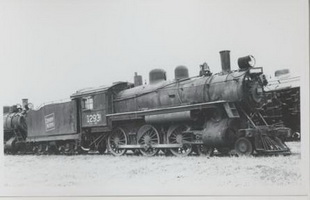
Steam locomotive with 4-6-0 wheel arrangement, obtained from Canadian National Railway through the agency of the Lease-Lend organisation. It was built by the "Locomotive and Machine Co".
| 1908 | Entered service on Canadian National Railways as No.232. Built by the Locomotive and Machine Company, Montreal, Canada, builders No.44780. |
| 1918 | To Canadian National Railways as H-6-c class No.1293. |
| 27.11.1942 | Entered service on Commonwealth Railways. |
| 12.1951 | Withdrawn. |
| 1957 | Scrapped. |
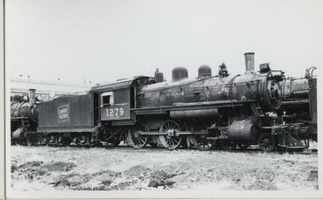
Steam locomotive with 4-6-0 wheel arrangement, obtained from Canadian National Railway through the agency of the Lease-Lend organisation. It was built by the "Locomotive and Machine Co".
| 1907 | Entered service on Canadian National Railways as No.247. Built by the Locomotive and Machine Company, Montreal, Canada, builders No.42653. |
| 1918 | To Canadian National Railways as H-6-c class No.1279. |
| 3.12.1942 | Entered service on Commonwealth Railways. |
| 5.1951 | Withdrawn. |
| 1957 | Scrapped. |
Steam locomotive with 4-6-0 wheel arrangement, obtained from Canadian National Railway through the agency of the Lease-Lend organisation. It was built by the "Locomotive and Machine Co".
| 1908 | Entered service on Canadian National Railways as No.237. Built by the Locomotive and Machine Company, Montreal, Canada, builders No.44785. |
| 1918 | To Canadian National Railways as H-6-c class No.1298. |
| 16.12.1942 | Entered service on Commonwealth Railways. |
| 5.1951 | Withdrawn. |
| 1957 | Scrapped. |

Steam locomotive with 4-6-0 wheel arrangement, obtained from Canadian National Railway through the agency of the Lease-Lend organisation. It was built by the "Locomotive and Machine Co".
| 1907 | Entered service on Canadian National Railways as No.222. Built by the Locomotive and Machine Company, Montreal, Canada, builders No.42657. |
| 1918 | To Canadian National Railways as H-6-c class No.1283. |
| 4.1.1943 | Entered service on Commonwealth Railways. |
| 5.1951 | Withdrawn. |
| 1957 | Scrapped. |
Steam locomotive with 4-6-0 wheel arrangement, obtained from Canadian National Railway through the agency of the Lease-Lend organisation. It was built by the "Locomotive and Machine Co".
| 1907 | Entered service on Canadian National Railways as No.218. Built by the Locomotive and Machine Company, Montreal, Canada, builders No.42795. |
| 1918 | To Canadian National Railways as H-6-c class No.1308. |
| 21.1.1943 | Entered service on Commonwealth Railways. |
| 2.1949 | Withdrawn. |
Steam locomotive with 4-6-0 wheel arrangement, obtained from Canadian National Railway through the agency of the Lease-Lend organisation. It was built by the "Locomotive and Machine Co".
| 1908 | Entered service on Canadian National Railways as No.231. Built by the Locomotive and Machine Company, Montreal, Canada, builders No.44779. |
| 1918 | To Canadian National Railways as H-6-c class No.1292. |
| 6.2.1943 | Entered service on Commonwealth Railways. |
| 10.1951 | Withdrawn. |
| 1957 | Scrapped. |

Steam locomotive with 4-6-0 wheel arrangement, obtained from Canadian National Railway through the agency of the Lease-Lend organisation. It was built by the "Locomotive and Machine Co".
| 1908 | Entered service on Canadian National Railways as No.229. Built by the Locomotive and Machine Company, Montreal, Canada, builders No.44777. |
| 1918 | To Canadian National Railways as H-6-c class No.1290. |
| 2.2.1943 | Entered service on Commonwealth Railways. |
| 4.1952 | Withdrawn. |
Steam locomotive with 4-6-0 wheel arrangement, obtained from Canadian National Railway through the agency of the Lease-Lend organisation. It was built by the "Locomotive and Machine Co".
| 1907 | Entered service on Canadian National Railways as No.221. Built by the Locomotive and Machine Company, Montreal, Canada, builders No.42656. |
| 1918 | To Canadian National Railways as H-6-c class No.1282. |
| 6.3.1943 | Entered service on Commonwealth Railways. |
| 12.1951 | Withdrawn. |